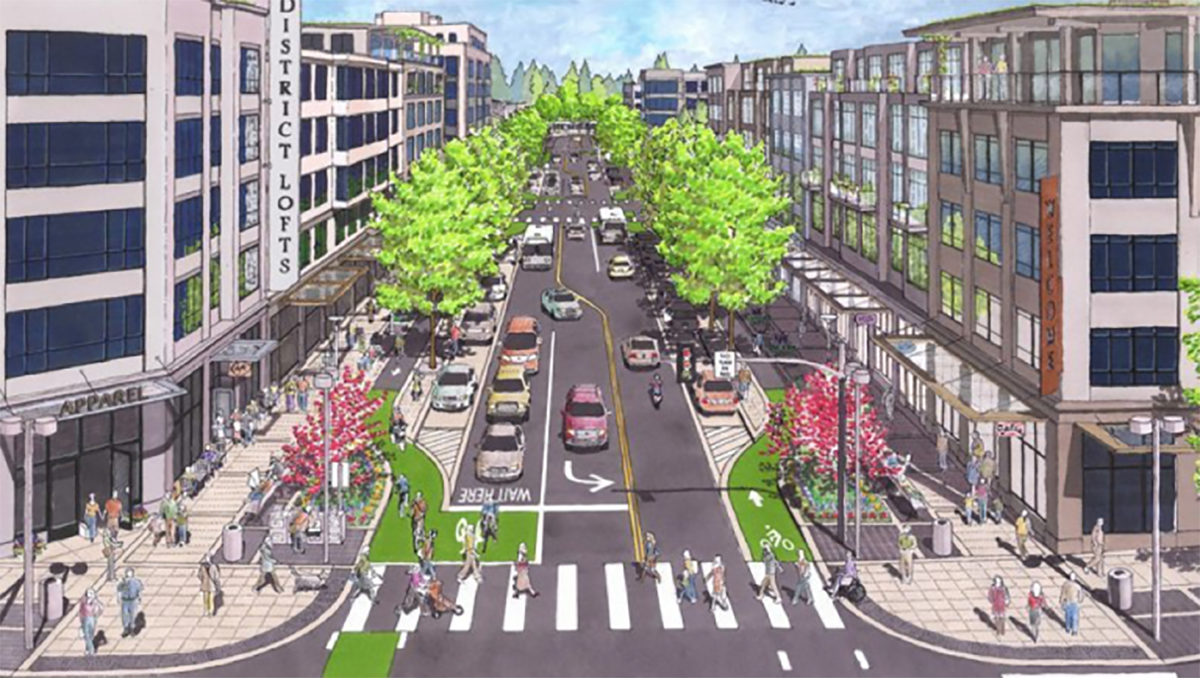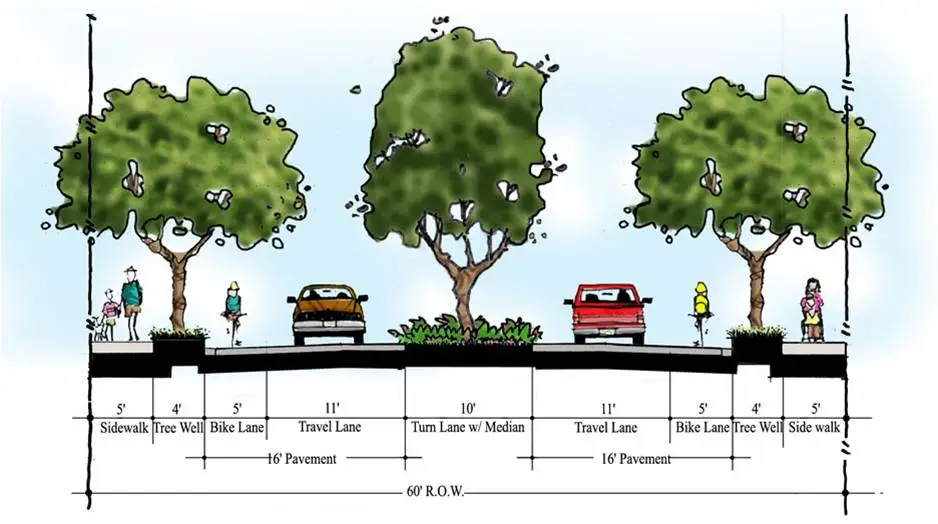The concept of “Complete Streets” is a design approach that aims to make streets safer and more accessible for all users, including pedestrians, cyclists, public transport users, and motorists. The idea behind complete streets is to create a balanced transportation network that provides safe and comfortable access for all modes of transportation, including pedestrians, bicyclists, strollers and wheelchairs, while also promoting economic vitality and social interaction.
Following World War II, in the United States transportation design was focused largely on maximizing automobile speed and volume through the creation of multi wide-lane, signalized roadways and highways. But by the 1970s, it had become clear to many people living in cities that this approach was insufficient for the safety and well-being of people living in urban and suburban areas.

The Complete Streets approach recognizes that streets are not just for vehicles, but also for people. It seeks to address the needs of all users by providing features such as wider sidewalks, bike lanes, public transit stops, crosswalks, and pedestrian islands. These features not only make streets safer for pedestrians and cyclists but also encourage more active modes of transportation.
There are four basic tenets to the Complete Streets design approach: 1) a focus on enhancing pedestrian amenities and safety with sidewalks, and raised crosswalks; 2) traffic calming measures to lower automobile speeds; 3) better accommodation for bicycles with dedicated bicycle lanes, paved shoulders and bicycle parking and 4) greater investment in public transportation to reduce the number of vehicles on the roadways. These elements, over the last fifty years, have been successfully implemented in many places across the United States to make streets far safer and more pleasant for pedestrians, bicycles, wheelchairs and even automobiles to use, however in many ways the work has just begun. The vast investment that occurred in redesigning urban transportation in the period for 1945 through the early 1980’s has to be largely undone and redone along the Complete Streets design approach.

The benefits of complete streets extend beyond safety and accessibility. Studies have shown that complete streets can promote economic development by attracting more foot traffic to businesses and increasing property values. They can also improve air quality and public health by reducing emissions from cars and encouraging physical activity.
Implementing complete streets requires collaboration among different stakeholders, including local government officials, transportation planners, community organizations, and residents. The process typically involves gathering input from stakeholders to identify the needs and priorities of different users, developing a design that balances those needs, and securing funding for implementation.

Complete streets have gained popularity in recent years, with many cities and towns adopting the approach as part of their transportation planning. However, there are still many communities that lack the infrastructure necessary to support safe and accessible transportation for all users. By prioritizing complete streets, communities can create a more equitable, sustainable, and vibrant transportation network that benefits everyone.
Places like Newport Rhode Island, which largely developed prior to the focus on the automobile following the completion of World War II, have an advantage that we are already largely designed along a Complete Streets approach. That does not mean however that there is not a great deal of work to undo the errors of past decades and to enhance our public spaces to make them better, safer and more enjoyable to use in the future.
Ross Cann, RA, AIA, LEED AP, is an author, historian, and practicing architect living and working in Newport, RI. He holds degrees with honor in Architecture from Yale, Cambridge, and Columbia Universities.
At A4 Architecture + Planning we are expert at integrating Complete Street principles into our urban designs to provide safer and more long-lasting building solutions for our clients. If you are interested in learning more about what we can do for you reach out to us at any time.
